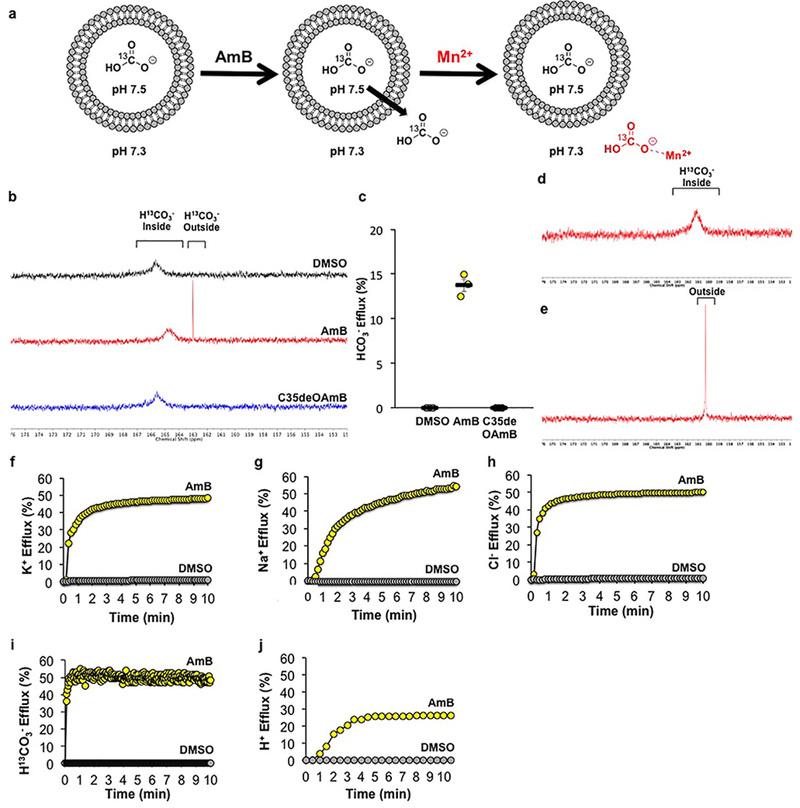Extended Data Figure 1 |. AmB can transport potassium, sodium, chloride, protons and bicarbonate across a lipid membrane.

Traces indicate percent of maximum ion efflux after Triton-X addition. a) Schematic for the 13C-NMR bicarbonate efflux experiment. (b) 13C-NMR spectra of H13CO3−-loaded POPC/10% cholesterol liposomes treated with AmB, C35deOAmB, or DMSO vehicle. NaH13CO3 was loaded inside the liposomes and the intravesicular solution was buffered to pH 7.5, while the extravesicular solution was buffered to pH 7.3. Due to this pH difference, intravesicular HCO3− displays a more downfield chemical shift relative to extravesicular HCO3−. Addition of AmB (1:4,000 AmB:POPC) produces an upfield 13C signal corresponding to extravesicular HCO3−, while the addition C35deOAmB or DMSO vehicle does not, demonstrating that AmB is able to facilitate HCO3− efflux. (c) Percent efflux of bicarbonate mediated by DMSO, AmB, or C35deOAmB quantified 10 minutes after addition to POPC liposomes (n = 3 biologically independent samples). The data from each run was normalized to the percent of total ion release from 0 to 100%. After lysis of the liposome suspension, the integration of the signal corresponding to extravesicular HCO3− relative to the integration of a 13C glucose standard was scaled to correspond to 100% efflux. (d) To confirm that the upfield signal corresponds to extravesicular HCO3−, Mn2+, which binds to HCO3− and quenches the observed 13C signal via paramagnetic relaxation enhancement (PRE), was added to the extravesicular solution. Because Mn2+ is impermeable to the POPC bilayer, Mn2+ can only affect the signal corresponding to HCO3− outside of the liposomes. Addition of Mn2+ quenched the upfield signal produced with the addition of AmB but not the signal corresponding to intravesicular HCO3− confirming that AmB causes efflux of HCO3−. (e) To effect complete ion release, the POPC liposomes were lysed with Triton X-100 at the conclusion of the experiment. (f) Potassium efflux from POPC/10% cholesterol liposomes after addition of [AmB] equivalent to 1:1000 AmB:lipid, or DMSO vehicle. (g) Sodium efflux from POPC/10% cholesterol liposomes after addition of [AmB] equivalent to 1:1000 AmB:lipid, or DMSO vehicle. (h) Chloride efflux from POPC/10% cholesterol liposomes after addition of [AmB] equivalent to 1:1000 AmB:lipid, or DMSO vehicle. (i) Bicarbonate efflux from POPC/10% cholesterol liposomes after addition of [AmB] equivalent to 1:1000 AmB:lipid, or DMSO vehicle. Kinetics of efflux were measuring using rapid injection NMR to add AmB to liposomes. (j) Proton efflux from POPC/10% cholesterol liposomes after addition of [AmB] equivalent to 1:1000 AmB:lipid, or DMSO vehicle. In (b,d-j), a representative spectrum or graph from at least three independent experiments is shown. In all panels, measurements were taken from distinct samples. In panel (c), graph depicts mean ± SEM.
